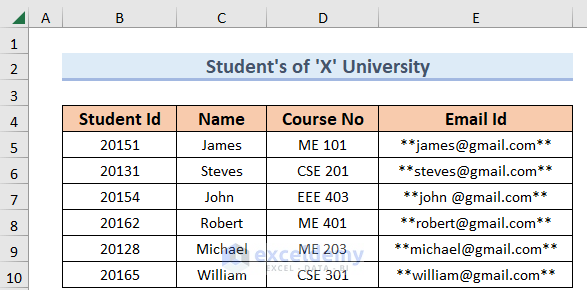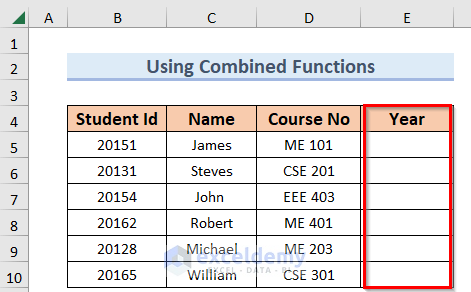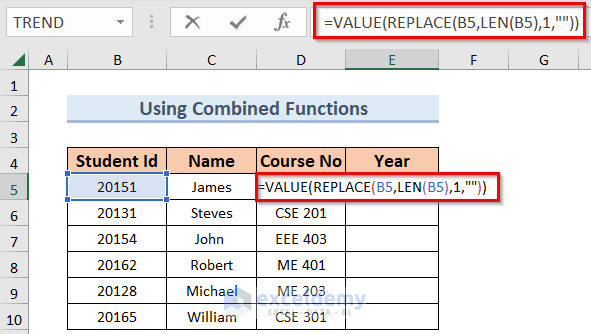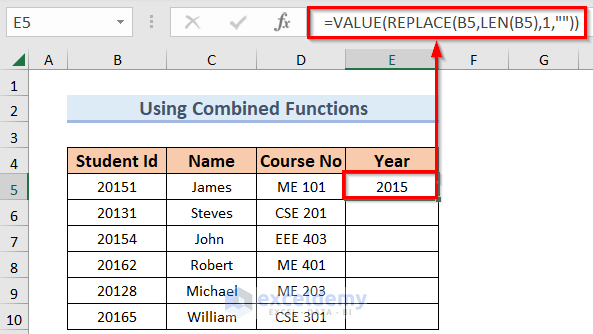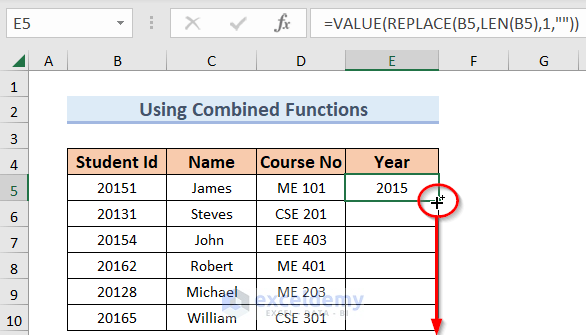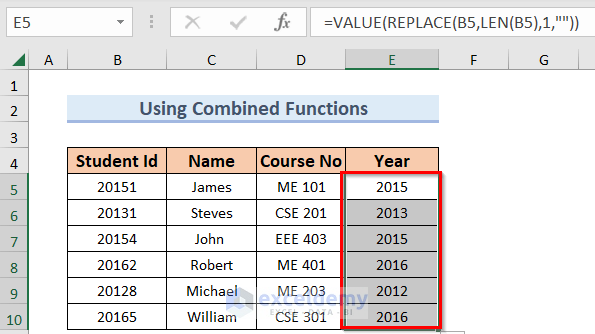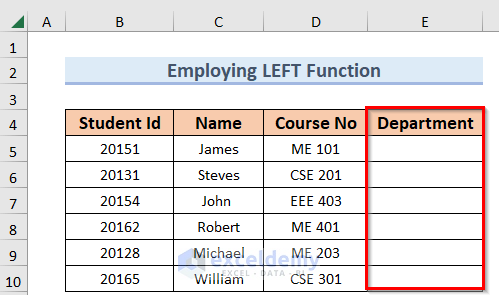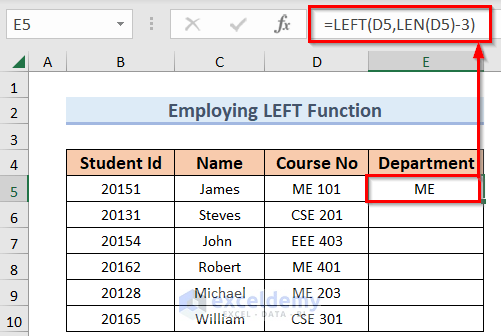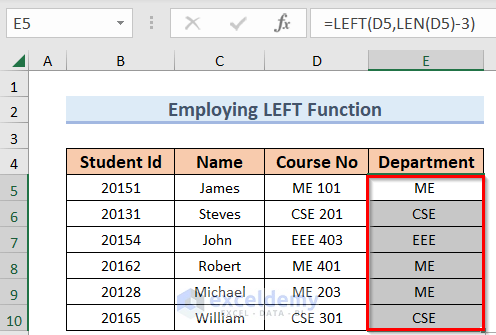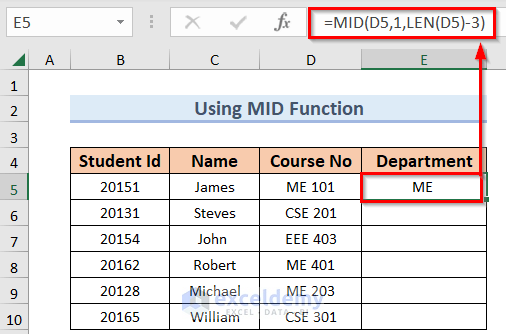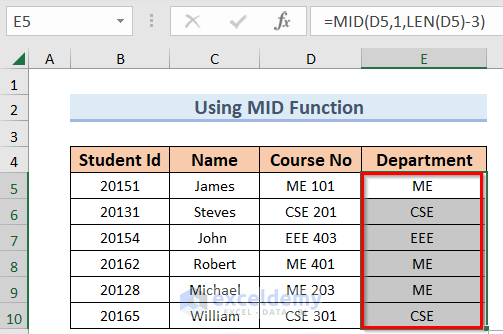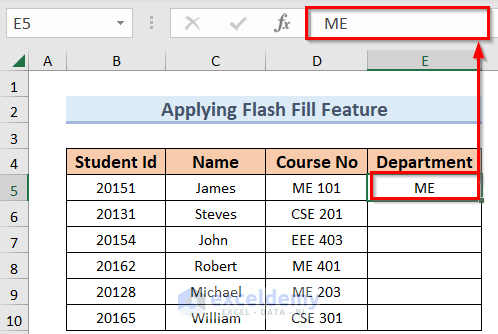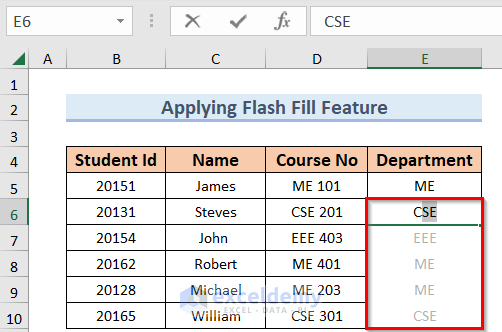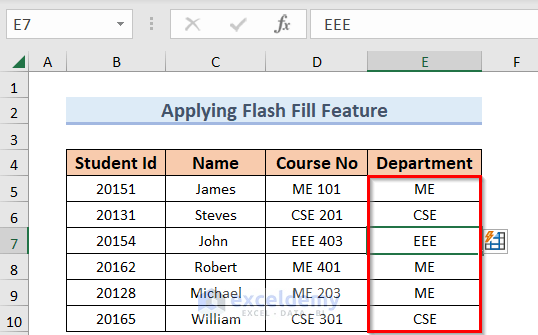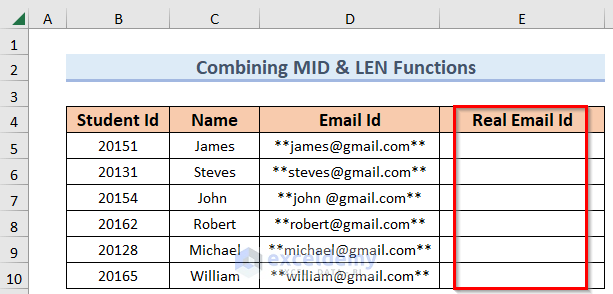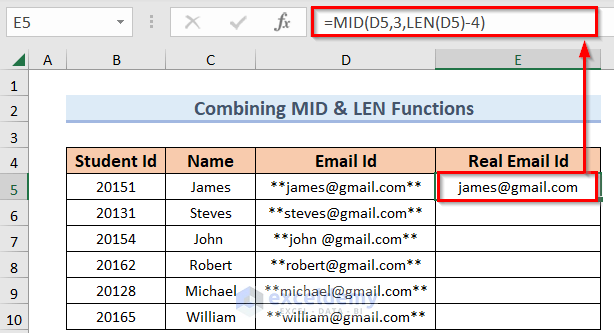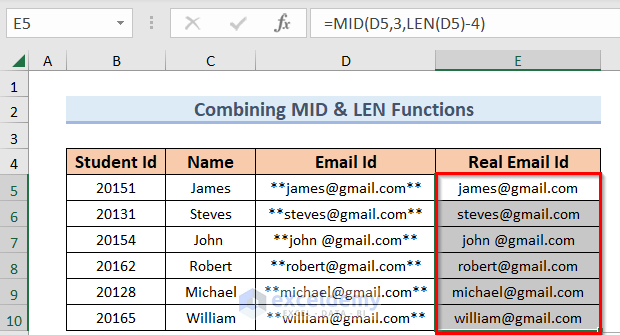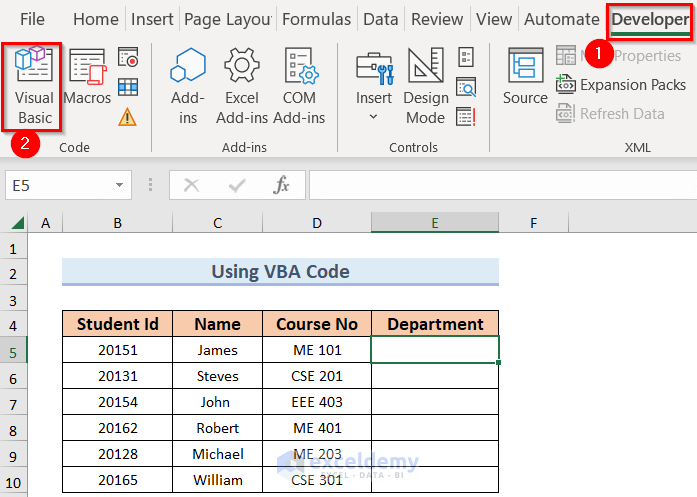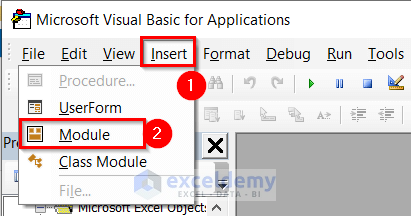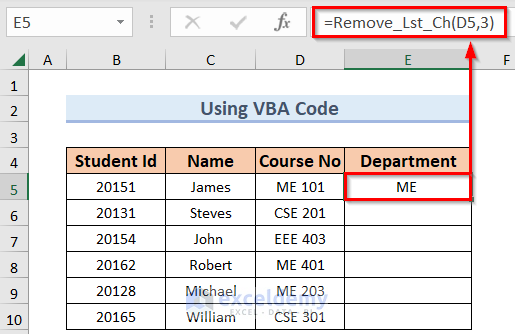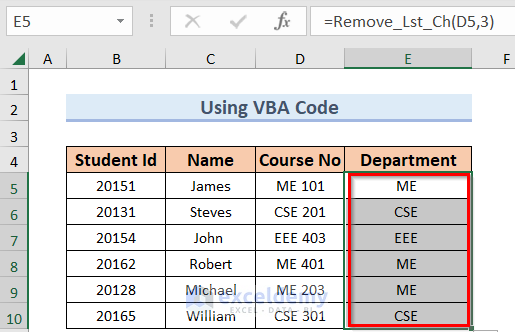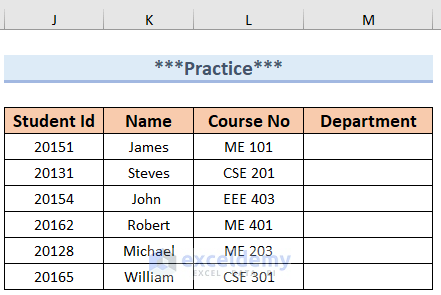In this article, I will show you the six effective ways to remove last character in Excel. Sometimes it is needed to extract different texts from a cell by removing the last character. It can be done by typing manually but it is not effective. So, let’s dive into this article and get to know the ways to remove the last character in Excel according to your needs.
Furthermore, for conducting the session, I will use the Microsoft 365 version.
How to Remove Last Character in Excel: 6 Ways
Here, I have a dataset where I am showing four columns: Student Id, Name, Course No, and Email Id. Using this data, I will try to show you the ways of removing the last character and extracting the necessary data.
Method-1: Merge VALUE, LEN & REPLACE Functions to Remove Last Character Only
Suppose Student Id consists of 5 characters among them first 4 are for a year and the last one is roll number as per this example. Thus, to extract the year from this Student Id you have to remove the last character using the REPLACE Function. The extracted values will be shown in the Year Column.
Steps:
- Firstly, select the output cell E5.
- Next, type the following function:
=VALUE(REPLACE(B5,LEN(B5),1,""))Here, B5 is the student Id. So, LEN(B5) will return the number of the total characters in the B5 cell, and in this case, it is 5 thus 5 will be start_num, 1 is num_chars and the new text is Blank. The VALUE function will convert the string to a number.
- Then, press ENTER, and you will get the output.
- After that, drag down the Fill Handle icon to paste the used formula to the other cells of the column.
In this way, the following result will appear.
Using REPLACE Function you will not be able to remove more than one character from the last.
Read More: How to Remove First Character in Excel
Method-2: Use of LEFT & LEN Functions to Separate Last Character
In the Course No column different course names have been created with the Department Name and number. To extract the Department from this Course No, you have to remove the last three digits using LEFT and LEN functions.
Steps:
- Select the output cell E5.
- Use the following formula:
=LEFT(D5,LEN(D5)-3)Here, D5 is text and LEN(D5)-3 = 5-3=2 is num_chars. So, the first two characters will appear as an output.
- Press ENTER to get the output.
- Drag down the Fill Handle icon and then you will get the following result.
Method-3: Applying MID Function to Delete Some Last Characters
In the Course No column different course names have been created with the Department Name and number. To extract the Department from this Course No you have to remove the last three digits using the MID Function.
Steps:
- Select the output cell E5.
- Use the following formula:
=MID(D5,1,LEN(D5)-3)Here, D5 is text, 1 is the start num, and LEN(D5)-3 is num_char.
- Press ENTER to get the output.
- Drag down the Fill Handle icon and so you will get the output in the Department column.
Read More: How to Remove the Last 3 Characters in Excel
Method-4: Using Flash Fill Feature to Remove Last Character in Excel
In the Course No column different course names have been created with the Department Name and number. To extract the Department from this Course No you have to remove the last three digits using the Flash Fill feature.
Steps:
- Select the output cell E5.
- Type the Department Name according to cell D5.
- In cell E6 start typing as the previous one and then like the following the Department names will be suggested.
- Press ENTER and the following outputs will appear.
Read More: How to Remove First 3 Characters in Excel
Method-5: Combine MID & LEN Functions to Remove First and Last Characters
Suppose in the Email Id column I have some Email Ids, but they are combined with some special characters at the start and end of these Ids. Now I want to remove these special characters at the first and last place simultaneously using the MID Function.
Steps:
- Select the output cell E5.
- Use the following formula:
=MID(D5,3,LEN(D5)-4)- Press ENTER and you will get the output.
Formula Breakdown
Here, D5 is text, 3 is the start num, and LEN(D5)-4 is num_char.
3 is used as the start num because there are 2 special characters before Email Id.
and 4 is subtracted from the total character length in num_char because there is a total of 4 special characters which you want to omit.
- Drag down the Fill Handle icon and then the following results will appear.
Method-6: Employing VBA Code to Pull Out Last Character in Excel
You can use the VBA code also to remove the last character like in Method-2 or Method-3.
Steps:
- Select Developer Tab >> Visual Basic Option.
- Visual Basic Editor will open.
- Select Insert Tab >>Module Option.
- Write the following code in Module 1.
Public Function Remove_Lst_Ch(my_txt As String, my_char_num As Long)
Remove_Lst_Ch = Left(my_txt, Len(my_txt) - my_char_num)
End FunctionThis Code will create a function named Remove_Lst_Ch.
- Save the code and Close the window.
- Type the function name here.
=Remove_Lst_Ch(D5,3)- Press ENTER and you will get the output.
- Drag down the Fill Handle icon.
After that, the following results will appear.
Read More: How to Remove Last Character from String Using VBA in Excel
Practice Section
For doing practice by yourself we have provided a Practice section like below for each method in each sheet on the right side. Please do it by yourself.
Download Practice Workbook
Conclusion
In this article, I tried to cover the easiest ways to remove the last character in Excel effectively. Hope you will find it useful. If you have any suggestions or questions, feel free to share them with us.
Related Articles
<< Go Back To Excel Remove Characters from Right | Excel Remove Characters | Data Cleaning in Excel | Learn Excel
Get FREE Advanced Excel Exercises with Solutions!